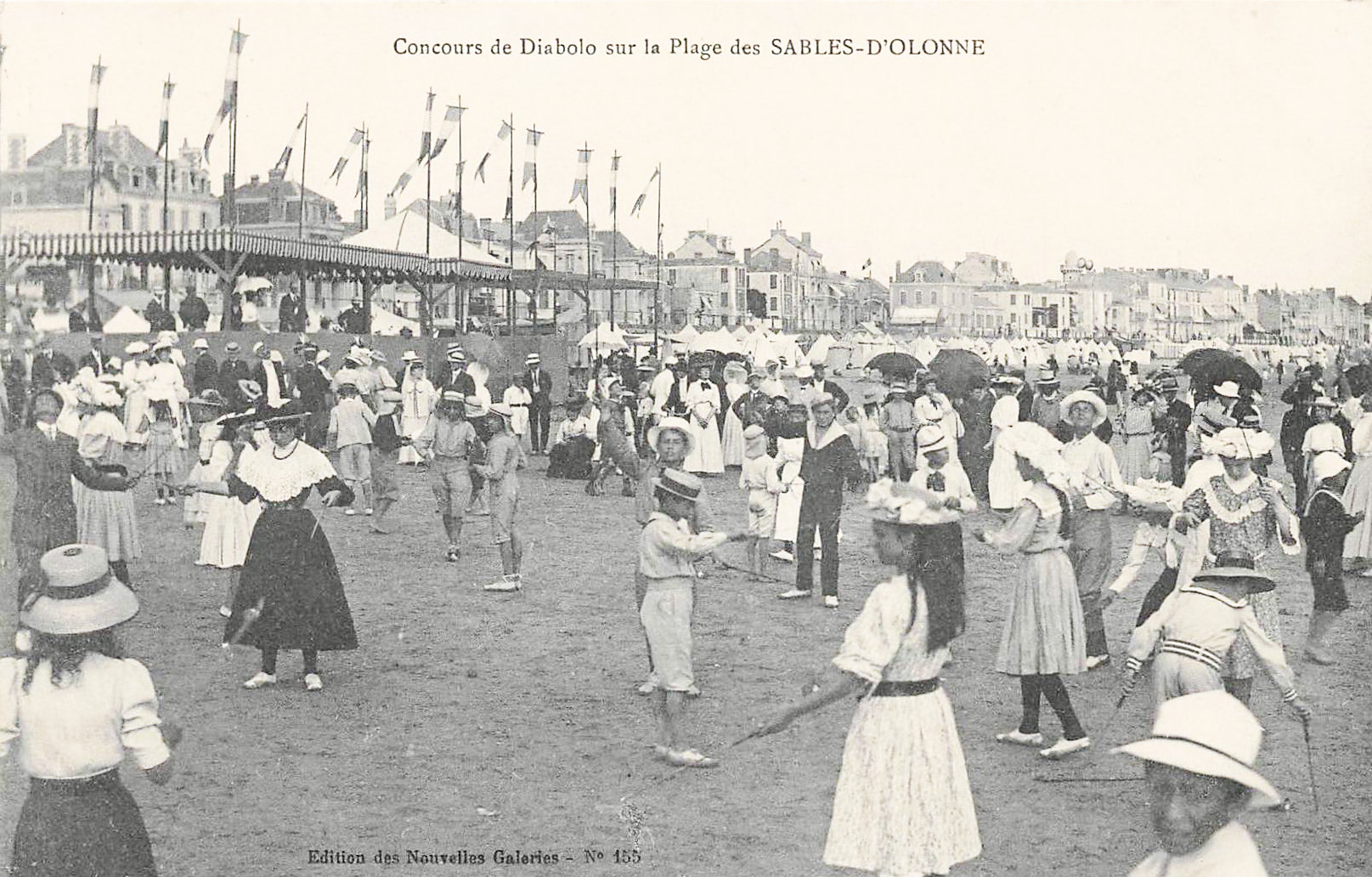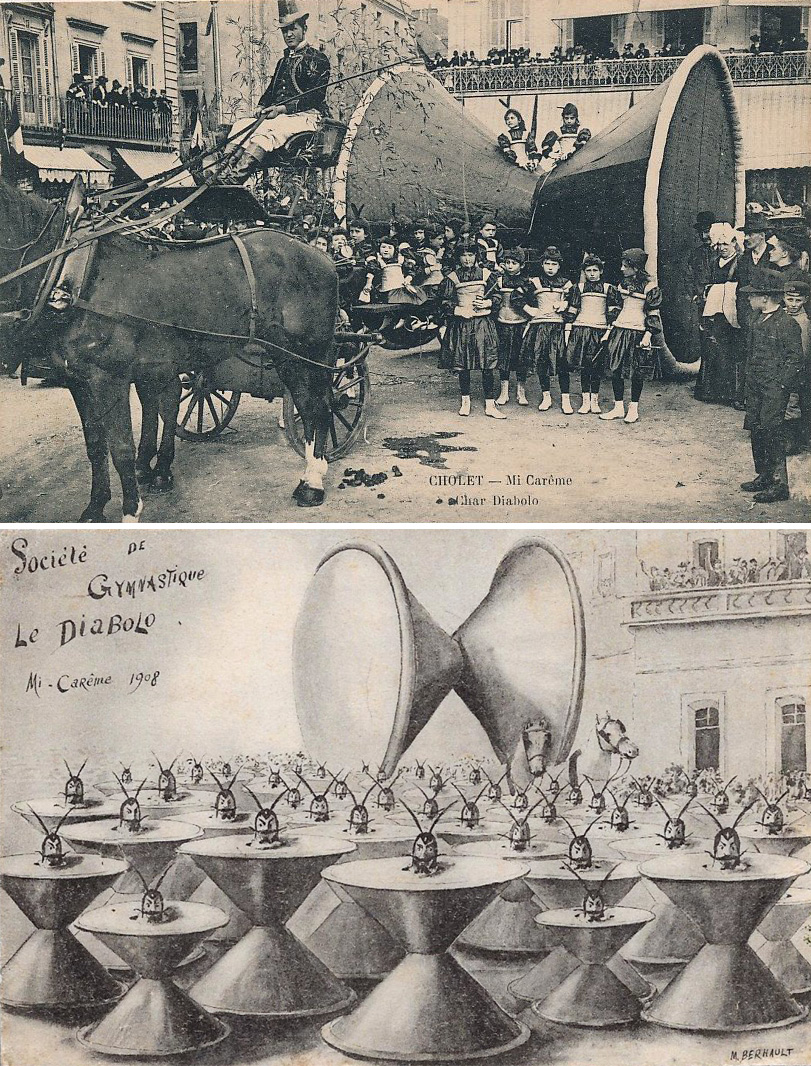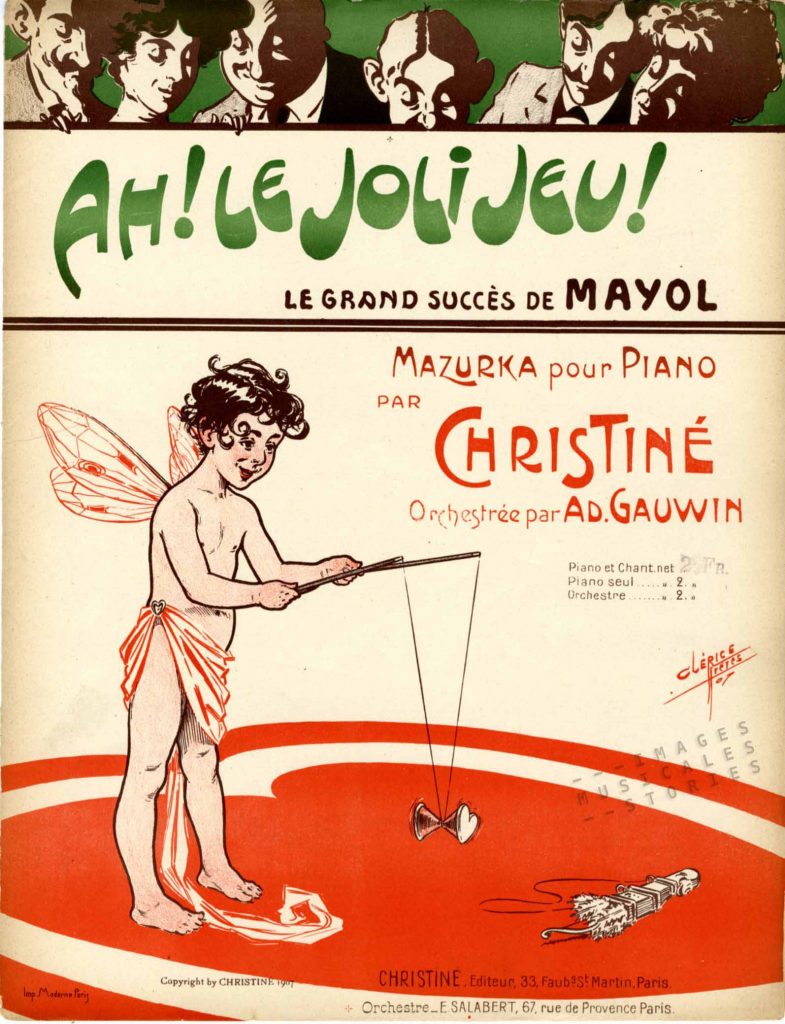
‘Ah! Le joli jeu!’ illustrated by Clérice is one of several sheet music about the diabolo. Curiously, apart from one, all are dated 1907. We learned that in that year Gustave Phillipart started the diabolo craze. He was a Belgian civil engineer who lived in Paris. During seven years he had researched how to perfect the old toy. After building about 150 prototypes he finally patented the toy in 1906 giving the diabolo its present-day look. Through an astute marketing campaign the game came into vogue in Paris, shortly to appear all over France the next year.
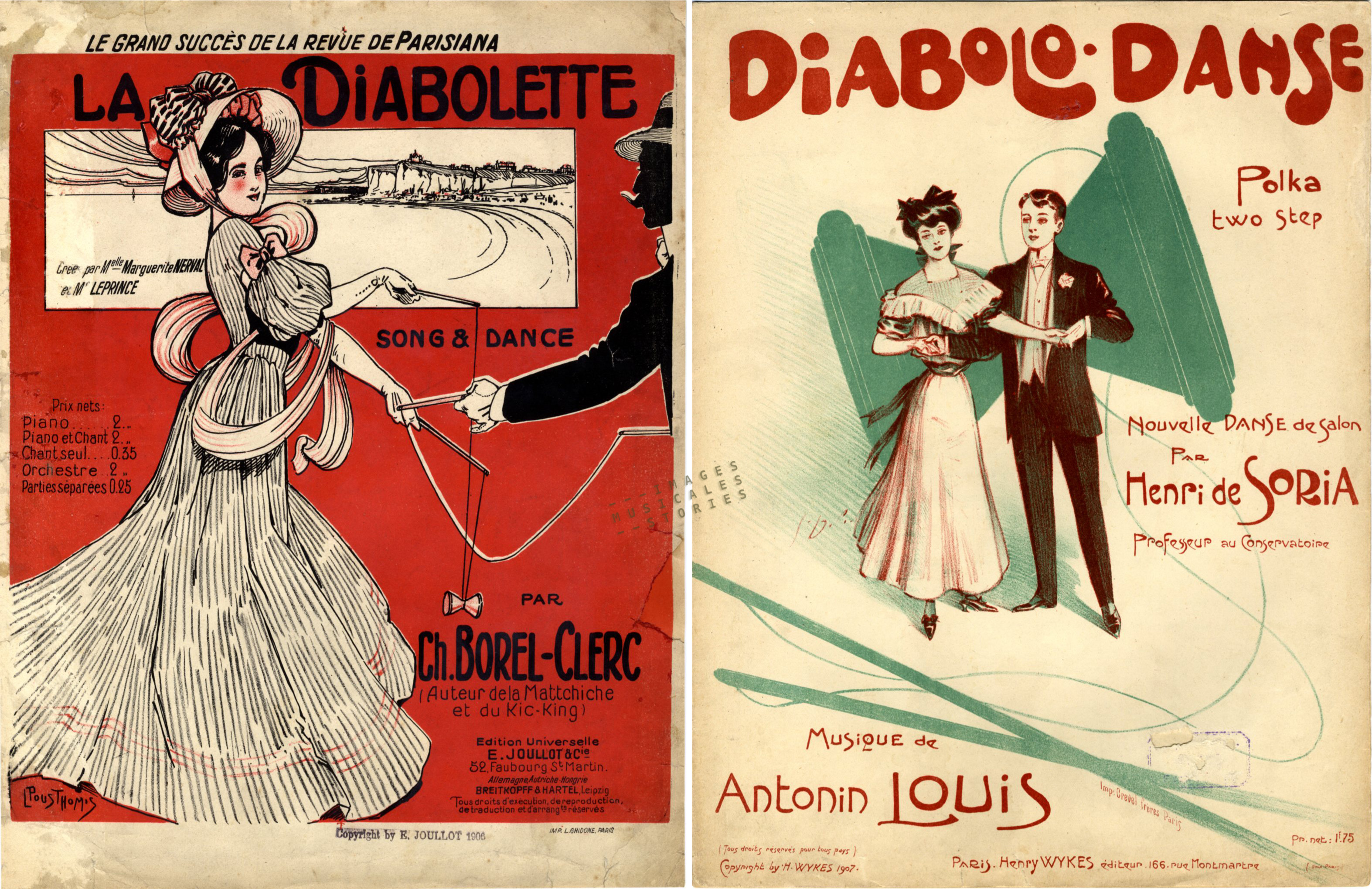
To draw attention to the diabolo Philippart and a few friends played diabolo in the Bois de Boulogne every morning. They attracted a cloud of elegant walkers. These onlookers, fascinated with the flying spindle, rushed to a shop to buy one. Word got round and soon the diabolo mania was born. Journalists wrote long articles about the new graceful game. Maybe the new divertissement became quickly popular because it attracted both men and women, young and old alike.
In a French professional magazine, Publicité Moderne, Philippart explains that he also used the many theatres in the capital to promote his diabolo. One such theatre even presented a diabolo ballet. Composers and song writers, always on the lookout for a novelty, followed suit in contributing to its success.
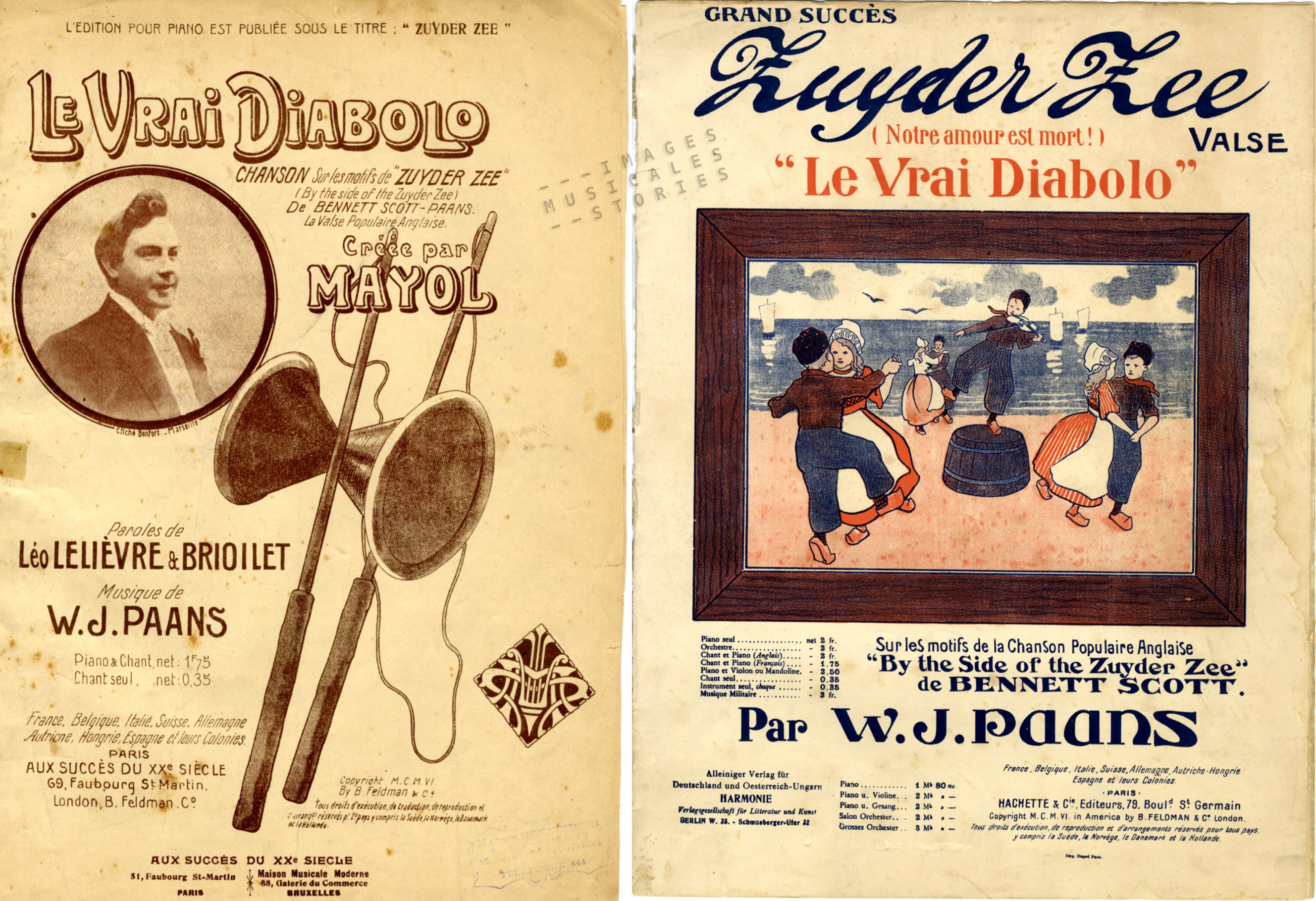
The first diabolo song already appeared in 1906 and probably had to be published fast to keep pace with the booming fad. A little British music-hall ditty, By the Side of the Zuyder Zee, was hastily adapted in France as Le Vrai Diabolo. The trifling French text of the song promotes the game with the obligatory harmless sauciness.
Jouer le diable au lit!
The gist of the verses above is that diabolo is an enjoyable little game that is all the rage, and that if a girl misses her throw of the spinning top, it is because she’s already dreaming of diabolical bed games with her husband-to-be.
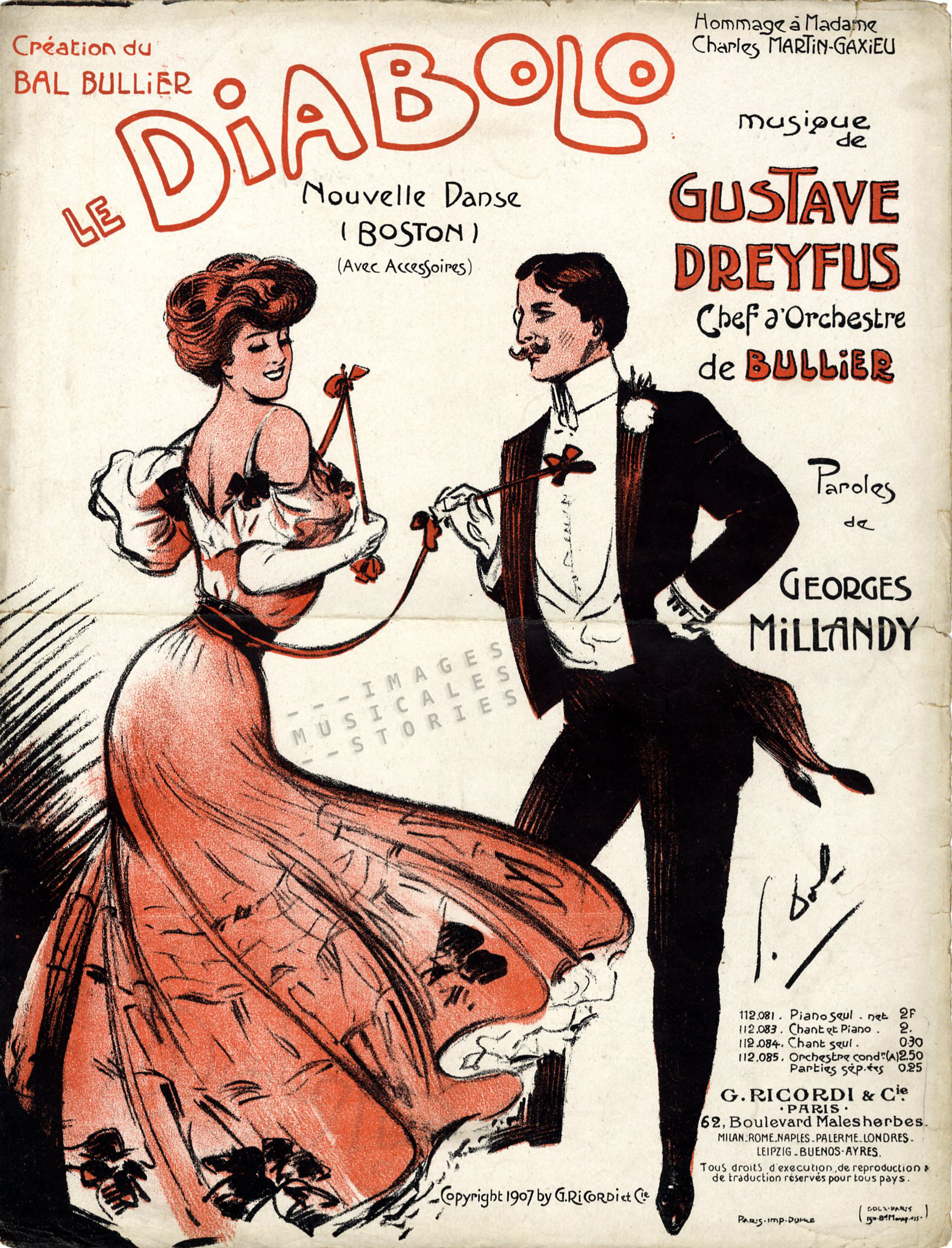
 Diabolo tournaments and parties were organised everywhere in France. Parks and beaches offered the best venue.
Diabolo tournaments and parties were organised everywhere in France. Parks and beaches offered the best venue.
During the carnival of 1908 the diabolo could not be missed in the parades
Unfortunately Philippart also got bad publicity. A baby in a pram was killed on the Champs Elysées when a top fell on its head. Philippart argued that the spindle had no shock absorber and thus clearly was a counterfeit. Anyway, as a result of the dreadful accident playing of the game was from then on regulated by police ordinance.
To launch his product in England Philippart had contacted the publisher and sportsman C. B. Fry. This famous cricketer created a new sport around the diabolo skills. It could be played like tennis but without a net: it was replaced by a rectangular court. The diabolo is slung from the service court and the player receiving the diabolo allows it to bounce once, then catches it on the cord and returns it… if possible. This playful tennis version did not catch on though.

In 1910, miss Renée Furie introduced a new circus act in Paris: the human diabolo. It was a variation on the human cannonball. The daredevil crept into the giant diabolo which was then catapulted into a net. Quel frisson! After which the charming lady elegantly climbed out of the contraption. Ouf!
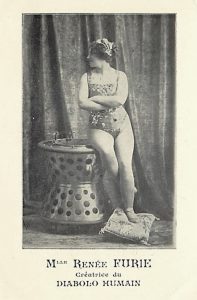
The diabolo craze never lasted that long and only revived moderately during the fifties. Nowadays its popularity has sadly dwindled to that of a traffic light entertainment.
A short from 1907, Diabolo Nightmare, attributed to Walter R. Booth, pictures the bizarre story of a maniac office worker addicted to the game. Crazy…

